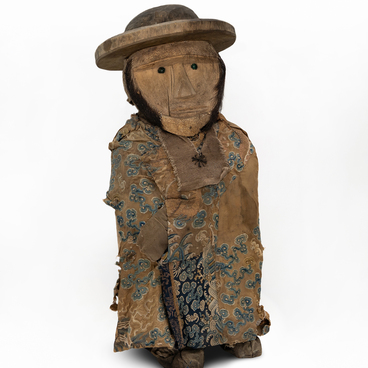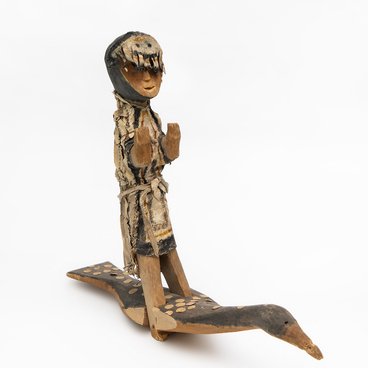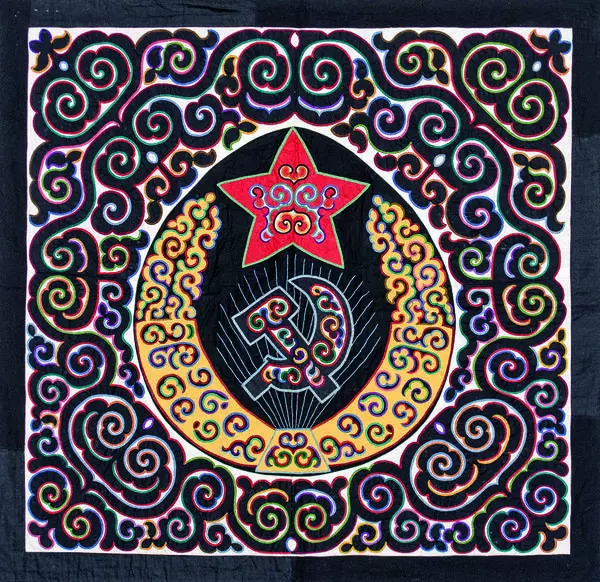The shaman’s belt (called “yamkha”), presented in the museum’s collection, was made by Alexandra Egorovna Tumali in the first half of the 20th century. This item consists of two tiers, narrow and wide. The first one, a strap, was made of black cloth, the second one was made of light dense fabric, and for the reverse side the craftswoman chose a canvas fabric.
To the second tier, on narrow leather straps threaded inside the belt, she attached metal objects: copper and bronze sleigh bells, chime-bells, kumpe pendants, as well as a toli mirror with a small eye and embossed decorations on the surface. The craftswoman attached bronze curly sewings to the upper narrow tier of the belt.
The metal parts of the belt were oxidized, the metal parts of two bronze sleigh bells were lost, the side edges were lost on two bronze mirrors, the fabric was worn, traces of mold appeared in the lower left corner, and traces of rust appeared on the metal parts.
The yamha belt usually consisted of a wide belt, to which iron elements were sewn — this was called “kangora-yamha”. The yamaha belt was usually made of moose skin, the metal parts most often looked like cones and were forged by the shaman himself. Each cone was suspended on a special ring, which was sewn to the belt. There could be from 13 to 31 such iron cones.
In addition to hollow cones, metal pendants were also tied to the belt. Thus, the weight of the entire product could reach five to eight kilograms. In all shamanic traditions, the belt is second only to the shamanic tambourine and mallet in importance of its role in the ritual. During kamlaniye — a shamanic ritual, — the belt allowed the noise to drive away evil spirits that interfered with the shaman in his wanderings and in search of the patient’s soul.
All the pendants
symbolized patron spirits and helper spirits. The metal bones on the clothes
emphasized the shaman’s involvement in the other world. Images of a bow with
arrows or spears were needed to fight against hostile forces. On some costumes
there were images of shovels, axes, boats and other objects that were necessary
for a shaman to travel to different worlds.







